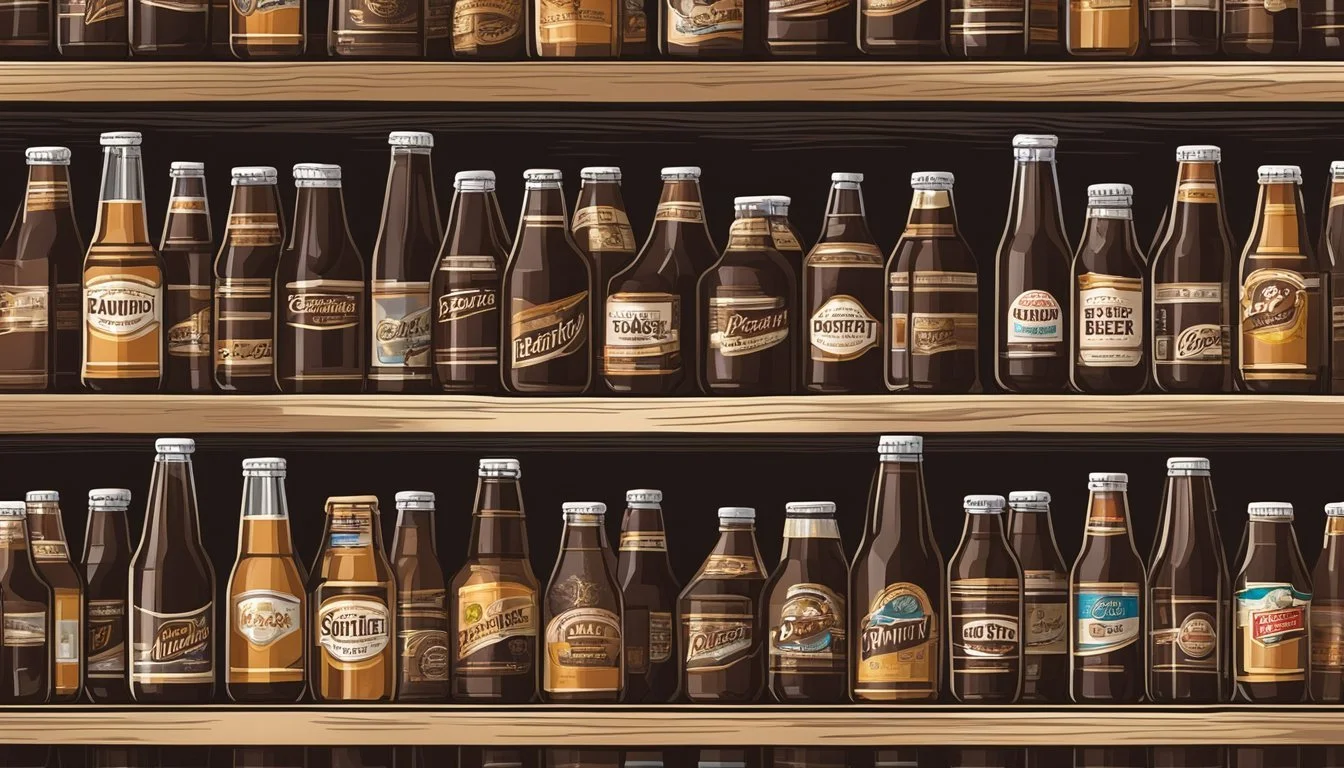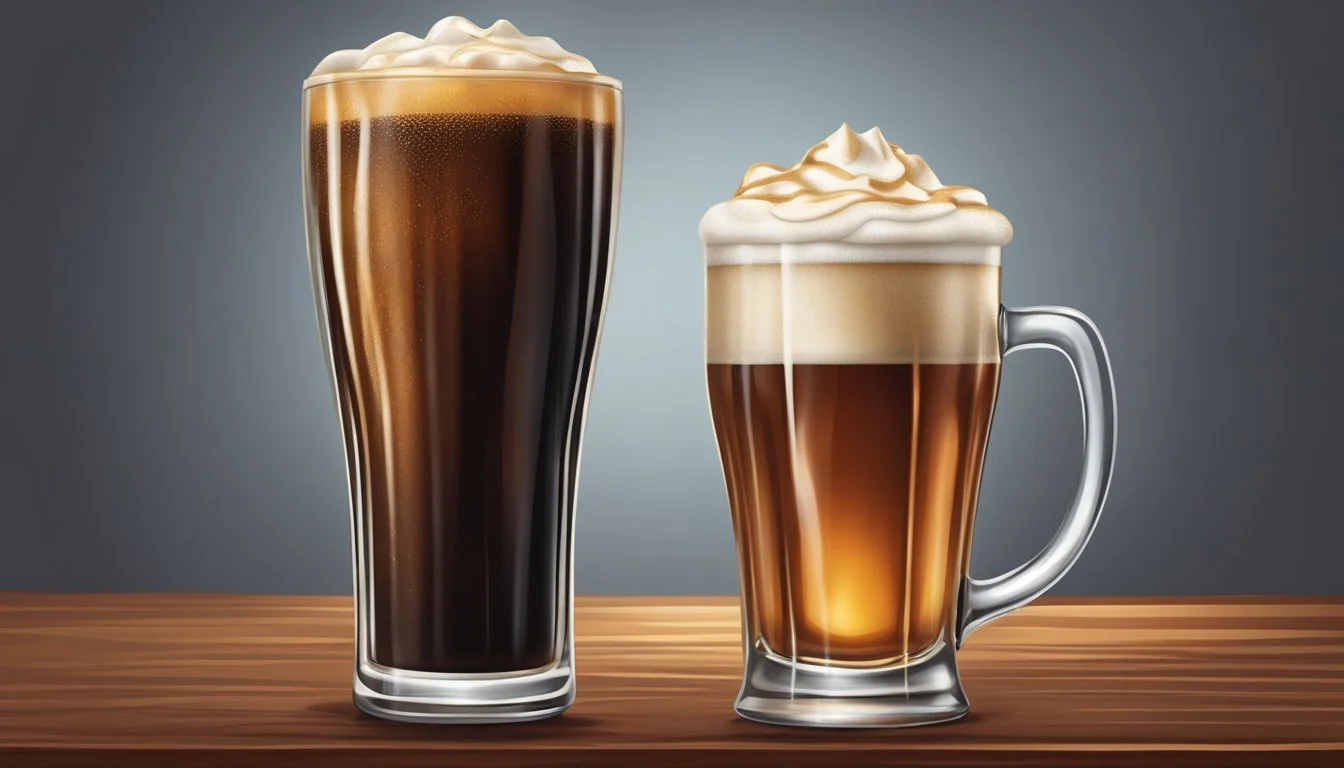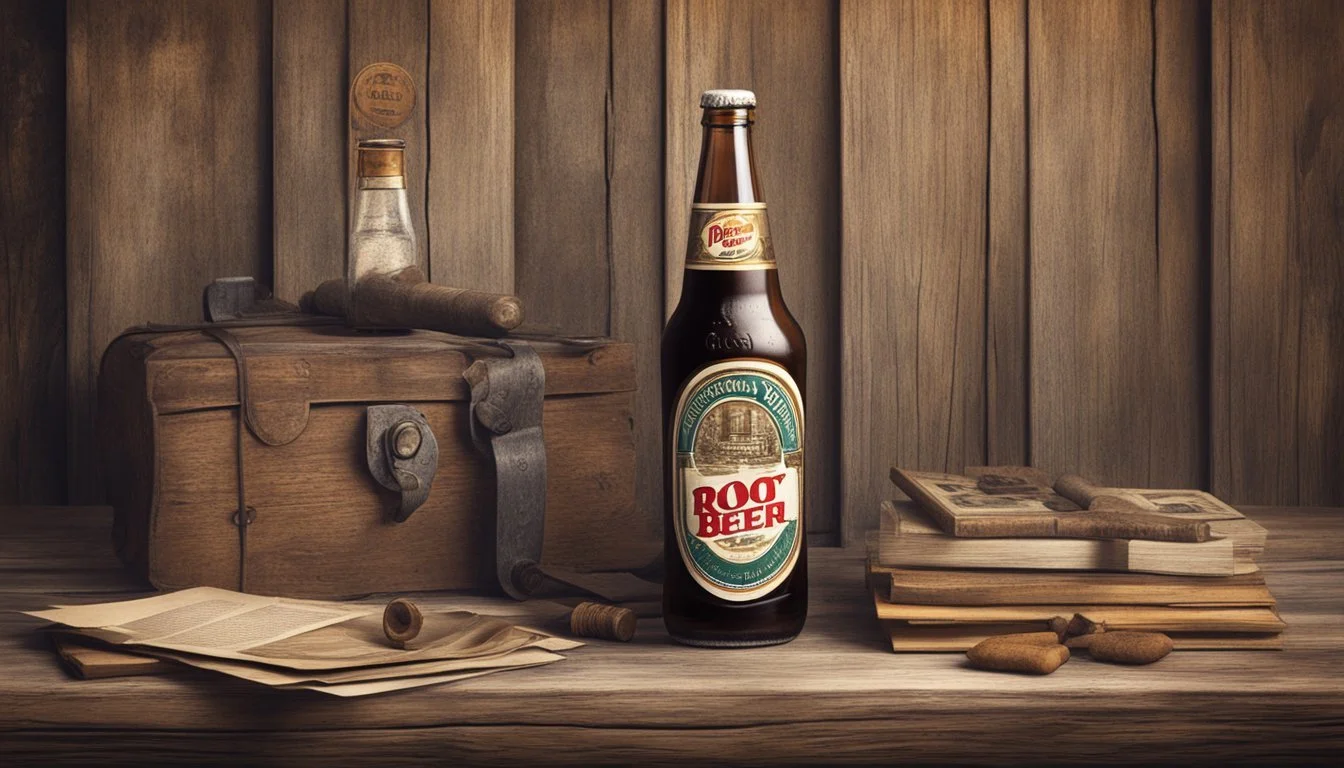Does Root Beer Go Bad?
Shelf Life, Storage, and Expiration
Yes, root beer can go bad, but it doesn’t spoil in the way food does. Root beer, being a type of soda, has a longer shelf life due to its non-alcoholic nature and preservatives. However, the flavors and carbonation may diminish over time if the root beer is not stored correctly.
Factors such as exposure to heat and light can accelerate the degradation process. Unopened cans or bottles of root beer should be kept in a cool, dark place to retain their quality. For the best taste experience, it is recommended to consume root beer within a few months of its purchase date.
In contrast to some other soft drinks, root beer made with natural ingredients may have a shorter shelf life and fewer preservatives. This can make the storage conditions even more critical. Knowing these details might help you enjoy root beer at its peak flavor and carbonation.
Understanding Root Beer
Root beer is a unique beverage that has been enjoyed for centuries. Unlike traditional beer, it is non-alcoholic and made from a variety of botanical ingredients.
Originally, the main flavoring component was sassafras root. Over time, this has been supplemented or replaced with other ingredients like sarsaparilla and wintergreen.
Sugar is a key ingredient, giving root beer its sweet taste. Variants may use different sweeteners, such as molasses, honey, or artificial sweeteners.
Flavoring ingredients often include vanilla, cinnamon, and licorice root, contributing to its complex taste profile.
Root beer may also contain a mix of other spices and caramel color for its signature look and flavor. Some brands use yeast in the brewing process, while others rely on carbonated water for fizz.
Here's a brief look at some common ingredients:
Ingredient Purpose Sassafras Primary flavoring Sarsaparilla Secondary flavoring Wintergreen Adds a minty taste Vanilla Smooth and creamy flavor Cinnamon Warm spice note Licorice root Sweet and earthy undertone Molasses Rich sweetness Honey Natural sweetener Caramel color Dark coloring Spices Enhance overall flavor profile
Despite its name, root beer does not contain hops like traditional beer. It is suitable for all ages and often enjoyed as a family-friendly drink.
Root Beer Ingredients and Composition
Root beer boasts a unique blend of ingredients that define its characteristic flavor and aroma.
Carbonated Water: The foundation of root beer, providing effervescence and a refreshing mouthfeel.
Sugar and Sweeteners: Root beer is known for its sweetness, typically achieved through cane sugar or high fructose corn syrup. Some variations may use honey or molasses for added richness.
Flavors: A mix of natural or artificial flavors contribute to root beer's distinct taste. Key flavors include sassafras, sarsaparilla, wintergreen, vanilla, and licorice root.
Herbs and Spices: An array of herbs and spices enhance the complexity of root beer. These may include cinnamon, anise, birch, and other botanicals.
Yeast: Some traditional recipes use yeast for fermentation, adding depth to the flavor and slight natural carbonation.
Caramel Color: This ingredient gives root beer its characteristic dark hue, making it visually appealing.
Preservatives: To extend shelf life, preservatives are often included, ensuring the beverage remains safe to consume over time.
The combination of these ingredients results in a multi-layered flavor profile that is both rich and refreshing. This unique composition sets root beer apart from other sodas and contributes to its enduring popularity.
The Shelf Life of Root Beer
Root beer, like many other beverages, has a defined shelf life that can be affected by various factors. Understanding these parameters helps ensure optimal freshness and quality.
Expiration Date and Its Implications
The shelf life of root beer depends on whether the bottle is opened or unopened. Unopened root beer typically lasts 6 to 12 months, contingent on its storage conditions. Keeping it in a cool, dry place is essential. Once opened, root beer's shelf life significantly reduces to approximately 1 to 3 months.
The "best by" or "expiration date" stamped on the bottle is a guideline for peak quality. Consuming root beer past its expiration date may result in diminished taste and possibly a flat beverage. However, it's not likely to be harmful due to its lack of pathogenic bacterial growth.
Factors Influencing Root Beer Freshness
Multiple factors influence the freshness of root beer. Storage conditions play a crucial role. Temperature fluctuations and light exposure can negatively impact the beverage, leading to a decline in taste and carbonation. Storing root beer in a refrigerated area can help maintain its quality longer.
Exposure to air and oxidation after opening the bottle accelerates the deterioration process. Properly sealing the bottle after each use can help minimize this effect. UV light can also degrade the drink, so keeping it away from direct sunlight is imperative to preserve its flavor and appearance.
By maintaining optimal storage practices, the shelf life of root beer can be maximized, ensuring a fresh and enjoyable drink for a longer period.
Proper Storage Solutions for Root Beer
Effective storage solutions can significantly prolong the shelf life of root beer. Key considerations involve maintaining appropriate temperature, light exposure, and using suitable containers like cans and bottles.
Optimal Storage Conditions
Proper temperature control is crucial. Storing root beer at around 55 degrees Fahrenheit, similar to traditional beer cellars, helps maintain its flavor and carbonation. Refrigeration is preferred for extended freshness, although root beer can also be stored at room temperature for shorter periods.
Limiting light exposure is important. UV rays, especially from sunlight, can degrade root beer quality. Keeping it in a dark place such as a pantry or cellar can prevent this issue. Additionally, bottles should always be stored upright to minimize oxidation and maintain seal integrity.
Impact of Containers on Root Beer Quality
The choice between bottles and cans affects root beer's shelf life. Bottles, particularly those made of dark glass, offer better protection from light exposure. However, they must be kept upright to prevent oxidation and leakage. Cans provide a completely sealed environment, reducing the risk of carbonation loss and light exposure.
Both containers need proper sealing to retain the carbonation and flavor of the root beer. Sealing techniques are vital, whether storing in a refrigerator or at room temperature. Using airtight containers ensures prolonged freshness, while improperly sealed ones can lead to flat or off-tasting root beer.
Identifying Spoiled Root Beer
Recognizing spoiled root beer involves observing changes in taste, smell, and appearance. These indicators can help determine if the quality of the root beer has degraded.
Taste and Smell Indicators
Spoiled root beer often exhibits noticeable changes in taste and smell. A primary sign is a fermented taste, which can develop if the root beer has been exposed to bacteria or yeast. This may result in a sour or stale flavor, similar to skunked beer.
Additionally, a spoiled root beer might have a more bitter or off-putting aftertaste than fresh root beer. The smell can also change significantly. Fresh root beer typically has a sweet, aromatic fragrance, whereas spoiled root beer can develop a sour or musty odor. These olfactory cues are crucial in identifying whether the drink has gone bad.
Visual and Physical Clues
Visual inspection can provide significant clues about the quality of root beer. One of the first signs is a reduction in carbonation. If the root beer has less fizz or a diminished foamy head upon pouring, it may indicate spoilage.
The color of the root beer can also change. It may take on a hazy or cloudy appearance, deviating from its usual clarity. Another indicator is the presence of sediment at the bottom of the bottle or can. These physical clues, coupled with changes in taste and smell, can help confirm if the root beer is no longer suitable for consumption.
Root Beer Versus Other Beverages
Root beer holds a distinctive place among beverages, distinguishing itself through its unique ingredients and health implications compared to alcoholic beer and other sodas or soft drinks.
Comparison with Alcoholic Beer
Root beer and alcoholic beer differ fundamentally in ingredients and alcohol content. Root beer is a non-alcoholic beverage, typically flavored with ingredients such as vanilla, licorice, and wintergreen. On the other hand, beer—which includes a variety of styles like pilsners and stouts—contains malted barley, hops, and yeast, contributing to its alcohol content.
Beer lovers often appreciate the fermentation process and the complexity of flavors in their drinks. Root beer, lacking alcohol, appeals to those desiring a sweet, fizzy drink without intoxication. The flavor profiles of root beer are more aligned with sweet, dessert-like characteristics, contrasting with the bitter and earthy tones of alcoholic beer.
Although both beverages can cause bloating due to carbonation, root beer typically does not contain the same level of acidity or bitterness found in many beers. This makes it a family-friendly option suitable for all ages.
Contrasts with Soda and Soft Drinks
When compared to other sodas and soft drinks such as cola and ginger ale, root beer offers some unique benefits and distinctions. Root beer often contains a combination of herbs and spices that give it a distinct taste, setting it apart from the caramel notes of cola or the spiciness of ginger ale.
Health-wise, root beer generally lacks the acidic nature of cola, reducing the risk of tooth enamel erosion. Many soft drinks, including diet versions, contain additives such as aspartame, which some studies suggest can cause irritability and anxiety. Root beer, especially those varieties with natural sweeteners, may pose fewer health risks in this area.
Despite these differences, like all carbonated beverages, root beer can contribute to gas and bloating. Its sugar content, while potentially lower than some colas, is still a concern for those monitoring their sugar intake. This positions root beer as a somewhat healthier alternative when compared to many commonly consumed sodas.
Health Considerations and Root Beer
Root beer is a popular beverage known for its sweet taste and frothy texture. However, it is important to understand the health implications of consuming this drink.
Root beer typically contains sugar or high fructose corn syrup, contributing to a high-calorie content. A 12-ounce serving can have around 150 calories and 38 grams of sugar. This can contribute to obesity and increase the risk of developing type 2 diabetes if consumed in excess.
Some varieties of root beer use artificial sweeteners instead of sugar. While diet root beer can reduce sugar intake, the long-term health effects of artificial sweeteners are still debated. It is best to consume these products in moderation.
Root beer is generally caffeine-free, making it a suitable option for those sensitive to caffeine. However, consumers should always check the ingredient label to ensure caffeine is not present.
Unlike some sodas, root beer does not typically contain alcohol, making it a non-alcoholic option for a wide audience. That said, naturally brewed root beer may have trace amounts of alcohol, though usually negligible.
The potassium content in root beer is minimal, offering slight nutritional benefit. An 8-ounce serving contains about 2 milligrams of potassium, which is a minor contribution compared to dietary needs.
There is no direct link between root beer and cancer, but its high sugar content can contribute to health conditions that elevate cancer risks. Therefore, moderation is key to minimizing potential adverse health effects from excessive sugar consumption.
Historical and Cultural Significance
Root beer holds a unique place in American history and culture. The origins of this iconic beverage trace back to Native American medicinal practices. Native Americans used roots such as sassafras and sarsaparilla to brew a traditional tonic, believed to possess healing properties.
When English colonizers arrived, they adopted this practice and created "root tea," which eventually evolved into root beer. The drink gained popularity and commercial success in the late 19th century, especially after Charles Hires began marketing a powdered version of the beverage.
Hires, a pharmacist, marketed his root beer as a healthful alternative to alcohol. He claimed that an innkeeper had shared the original recipe during his honeymoon. This claim added a sense of charm and tradition to the drink.
The beverage's cultural significance extends to its popularity among children and families. Root beer floats—a combination of root beer and vanilla ice cream—became a classic American treat, especially in the mid-20th century. Root beer-flavored candy also became a beloved treat, further embedding the beverage in American culture.
Edward Barq, a New Orleans native, contributed to the root beer legacy by founding Barq's root beer in 1898. His experimentation with different recipes near the swamps of Biloxi, Mississippi, resulted in one of the most recognized root beer brands today.
Though the FDA banned the use of sassafras oil in food and beverages due to its potential carcinogenic properties, root beer continues to be enjoyed across the nation, now made with alternative flavorings.
Enjoying Root Beer in Culinary Creations
Root beer isn't just a beverage; it is a versatile ingredient in many culinary creations.
Root beer floats are a classic, featuring vanilla ice cream topped with fizzy root beer.
Another delightful treat includes root beer cupcakes, where root beer is mixed into the batter for a unique flavor.
For those opting for healthier alternatives, sugar-free root beer floats can be made with diet root beer and low-calorie vanilla ice cream.
Table: Root Beer Float Variations
Type Root Beer Ice Cream Classic Regular root beer Vanilla ice cream Sugar-free Diet root beer Low-calorie vanilla ice cream
In cooking, root beer can be used to create flavorful glazes for meats such as root beer glazed ham. The sweetness of the soda adds a unique taste to savory dishes.
Aside from desserts and meats, root beer bread is another surprising creation. This quick bread incorporates root beer to give it a subtle, sweet undertone.










